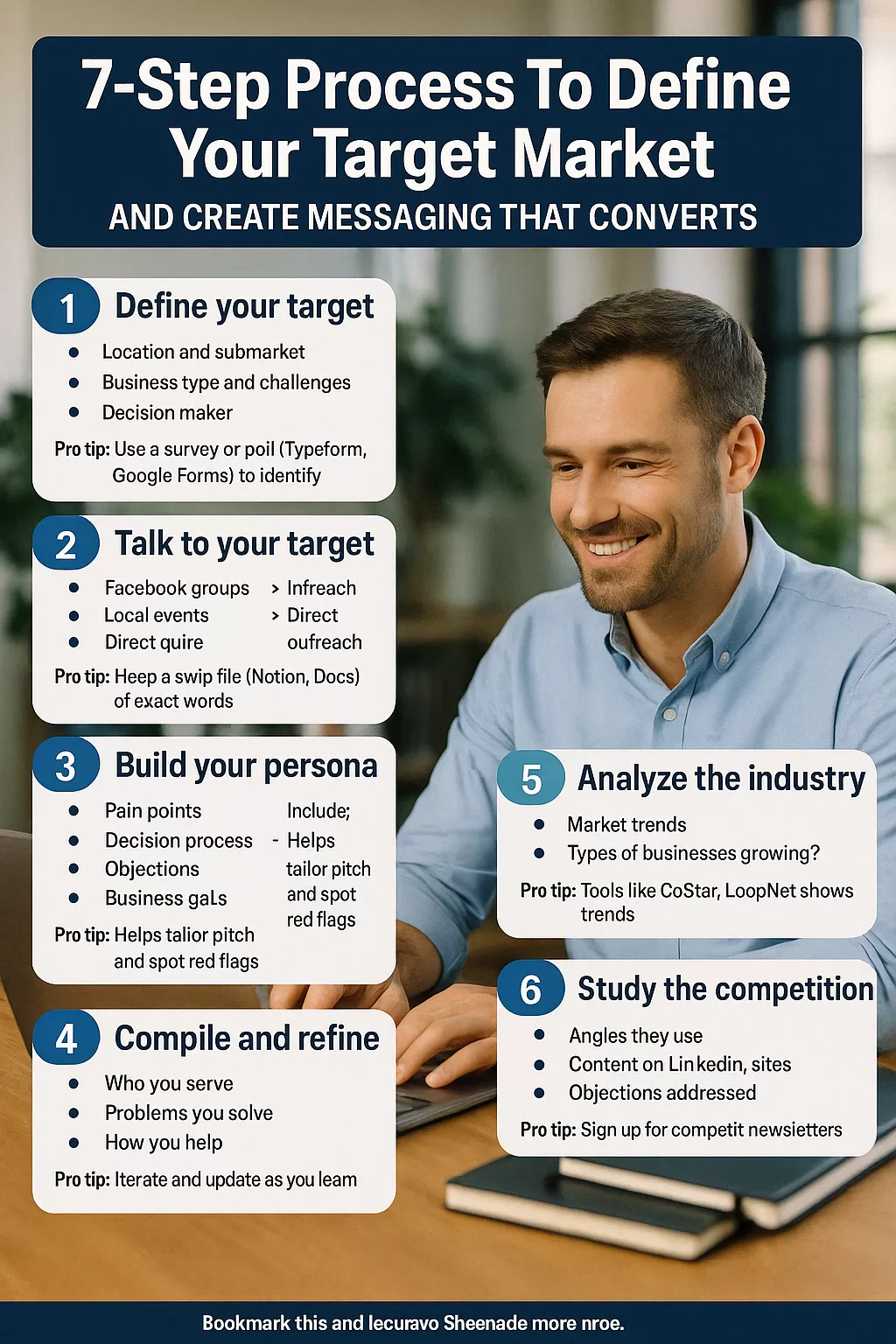They post listings. They say they “specialize in office or industrial.” They chase leads from everywhere and wonder why their outreach isn’t getting responses.
If you want your messaging to land—and your pipeline to stay full—you need to research like a pro.
Here’s a simple 7-step process to define your target market and build messaging that attracts the right prospects (so you stop wasting time on the wrong ones).
Step 1: Define your target
Start by answering: Who are you trying to reach?
Are you targeting biotech labs in Long Island City? Multi-site medical practices looking for expansion space? Light industrial users between 5K–15K SF in North Jersey?
Look at:
-
Location and submarket
-
Business type and stage of growth
-
Their top space-related challenges (expansion, relocation, cost reduction)
-
Who the decision maker is (owner-occupier? COO? Practice manager?)
Pro tip: Use a 3-question Typeform to ask past clients about what problems they were trying to solve when they first came to you.
Step 2: Collect real data
Once you’ve identified your target, don’t assume you know what they care about—dig into what they’re actually saying.
Use tools like:
-
Google’s autocomplete to uncover what they’re searching
-
Reddit threads for local business owners or specific industries
-
Quora to see common concerns about leases, expansions, or subleasing
-
LinkedIn comments on posts by local developers or architects
Pro tip: Start a private swipe file in Notion or Google Docs—copy and paste the exact words people use.
Step 3: Talk to your target
Your best insights won’t come from data—they’ll come from conversations.
Hop into:
-
Facebook groups for business owners in your market
-
Local industry meetups or Chamber of Commerce events
-
Trade shows or panel discussions (even virtually)
-
Direct outreach on LinkedIn: “Hey, I help businesses in [industry] find better space. Mind if I ask you 2 quick questions?”
Pro tip: Use what you learn to refine both your messaging and your offer.
Step 4: Build your persona
Turn all that info into a sketch of your ideal client. It’s not just demographics—it’s the story behind their search.
Include:
-
Their pain points (e.g. “we’ve outgrown our space”)
-
How they make decisions (fast? slow? consensus?)
-
Common objections (“we’re not ready” or “our lease is 18 months out”)
-
Their business goals (more revenue, efficiency, proximity to talent)
Pro tip: This makes it easier to spot red flags and tailor your pitch in discovery calls.
Step 5 & 6: Analyze the industry and competition
Now zoom out.
Look at market trends. Who’s moving in and out? Are certain types of businesses growing fast in your area?
Then study what other brokers are doing—how do they position themselves? What seems to get attention?
Check:
-
Angles they use (e.g. “tenant rep for life sciences” vs. “full-service CRE”)
-
Content on LinkedIn or websites (what hits? what flops?)
-
How they handle objections or educate their audience
Pro tip: Tools like CoStar, LoopNet, and even competitor newsletters are goldmines for trend-watching.
Step 7: Compile and refine
Pull everything together into a tight 1-page profile:
-
Who you serve
-
What problems you solve
-
How you help
-
Proof you’ve done it before
Then translate that into copy for your website, LinkedIn summary, email outreach, and cold call scripts.
Pro tip: Keep iterating. The better you understand your market, the easier it gets to create messaging that clicks.
Most brokers are trying to grow with generic marketing.
Stand out by getting specific.
Do the research. Build your persona. Speak directly to your ideal client’s pain—and become the broker they trust before they need space.



